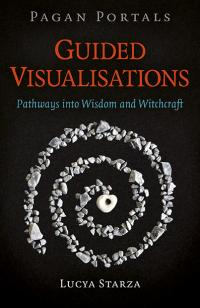
Guided visualisations use an interactive story to help participants know themselves better, find potential solutions to problems, get ideas for creative and artistic projects, see possible ways forward in life, attune themselves to the cycles of nature, and increase wisdom in general. They can also be used as a wellbeing tool, reducing stress and anxiety through relaxation techniques as well as by improving self-knowledge and confidence. Many guided visualisations have spiritual aspects, but are not exclusive to any one tradition. I am a modern pagan witch, and many of the visualisations within this book were originally devised to help trainee witches develop their own understanding of the elemental powers, the Wheel of the Year and the power of the moon, and by that develop their magical abilities. This extract had been reprinted with the kind permission of the author to coincide with this weekend's full moon.
Find somewhere safe and comfortable. Sit and close your eyes. Take three deep breaths in and out and relax, then visualise the following:
Imagine you are in the main room of an old-fashioned cottage, perhaps the cottage of a wise woman or wise man from the past. Imagine that it is your cottage and you are the wise person. Your cottage is sparsely furnished, but comfortable, with an open fireplace and a besom broom propped against the back door. It is dusk. The room is lit by the glow from the fire and a lantern which hangs on a hook from a ceiling beam, but you can still see a little light through the window at the front. The window looks out onto a small garden leading to a country lane bordered by an ancient hedge. Beyond the hedge there is a hill, silhouetted in the twilight sky. On a hook on the wall by the front door of the cottage hangs a warm cloak and next to that is propped a wooden staff. Take the cloak and put it on, then take the lantern and staff and leave the cottage by the front door.
Walk down your garden path and into the country lane. Past your garden, the hedge rises high on either bank of the lane. You cannot see what lies the other side. You walk for a while, aware of your footsteps and the sounds, sights and scents of the country lane in the early evening. After some time, you come to a tall gate in the hedge. It is an old gate, worn by the elements – the gales of spring, the sun of high summer, the storms of autumn and the frosts of winter. Yet it is still sturdy and closed to all except those who know the way to open it, such as yourself. You know how to open the gate and you do so. Pay attention to how easily or difficult it, the stiffness of the mechanism, the weight of the gate. The gate opens and you step through.
On the other side, a path slopes gently upwards into a dark wood. Night has encroached, and only the glow of your lantern illuminates a few steps ahead. You must tread carefully. The path continues through the trees, but the way is not easy. Fallen branches and twisted roots are obstacles hard to see in the darkness. You hear sounds around you – wind in the branches, rustling in the undergrowth, a distant bark, a hoot. Twigs at the ends of branches catch at your clothing. Find your way through the dark wood, but beware of dangers, and keep to the path. You follow the path through the dark forest for some time. Eventually you notice the trees start to thin and silvery moonlight shines between the trunks and through gaps in the branches overhead. The path is illuminated by the moonlight now and leads you safely out of the woods.
Once out of the trees, you see the hill rise in front of you – a high mound with grassy slopes and a ring of trees at the top. The path continues. It spirals up the hillside, around and around. There are no obstacles here except the incline. You will need perseverance to make it to the top. You have your staff to lean on, and progress up the hill, around the twisting path. As you round the bends in the spiral, ascending the hill, the path takes you up above the canopy of the forest. The moon has risen. It is a full moon. It shines brightly in a clear, starry sky. You stop to catch your breath. As you pause in your journey, you look around. You see the landscape stretched out below, distant. It is the world you left behind when you walked through the gate. The path ahead looks steeper still, but you go on.
You continue on the path as the spirals get steeper and climb higher, towards the top of the hill. The hilltop is crowned by a ring of dense, ancient trees, which you approach although the last curve of the path is the steepest. You round the last, steep bend and see before you an opening in the ring of trees, a gateway to the top of the hill. You step through the gap into the circle within. The moon’s silvery light shines down and illuminates the ground within the circle of trees. In the centre is a dew pond, full of collected water, reflecting the bright, full moon in the starry sky above. You walk towards the pond and look into it. You can see in the water the image of the silver disc of the moon and the image of your own reflection. Then you see a third image; that of a being standing next to you.
For a moment, you are surprised. How did they get here?
Where did they come from? Who are they?
Then you realise you know who they are, even if you have not met them before. Turn to face them. Greet them. Talk to them. Spend some time conversing with them. Say what you need to say and listen to what they reply in return. Perhaps they have a message for you. After a while, your conversation comes to an end. The being you are talking to tells you to look once more into the pool. You do and once more see the reflection of the moon – now directly overhead. You see the reflection of your own face too. But the being you met is no longer reflected there. They are gone.
You know it is time for you to leave too; to return home. You retrace your steps to the gap in the circle of trees, down the spiral path around the hillside and into the dark wood. Now the wood does not seem so frightening. You easily find your way through it to the old gate in the hedge. You open the gate and pass through it to the lane, shutting the gate carefully behind you. Then you walk back along the lane, up your garden path and into your cottage. You close the door, replace your staff and lantern and hang up your cloak. Your journey is complete.
When you are ready take a deep breath, shake your fingers and toes and open your eyes to the real world.
Pagan Portals - Guided Visualisations Pathways into Wisdom and Witchcraft by Lucya Starza and published by Moon Books www.moon.-books.net December 11 2020 : Paperback 978-1-78904-567-3 : £6.99 $10.95
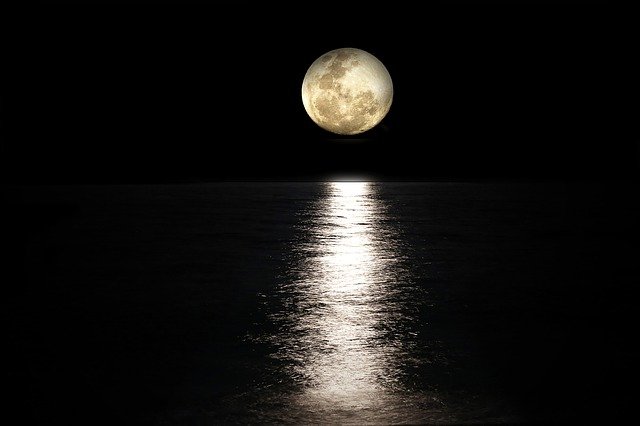
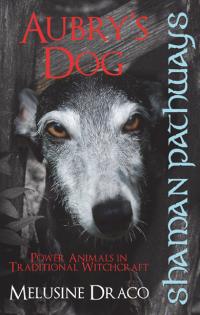

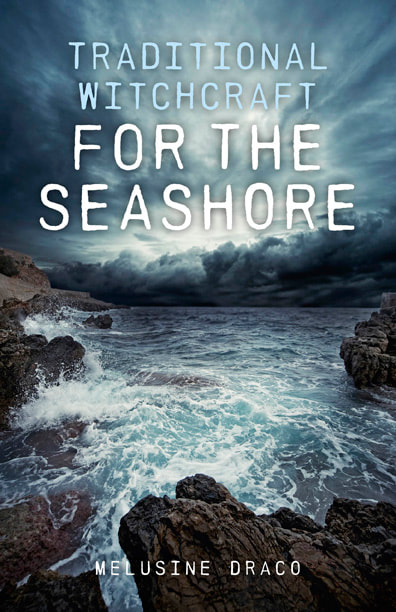


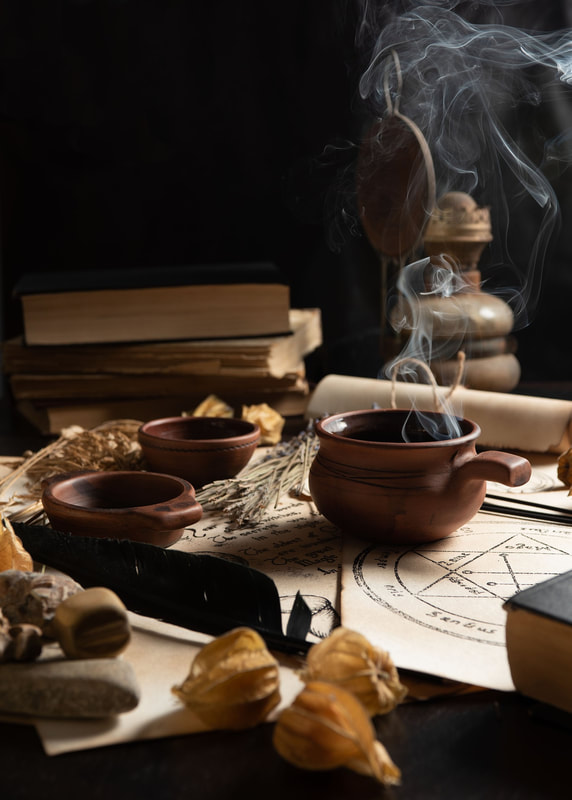
 RSS Feed
RSS Feed